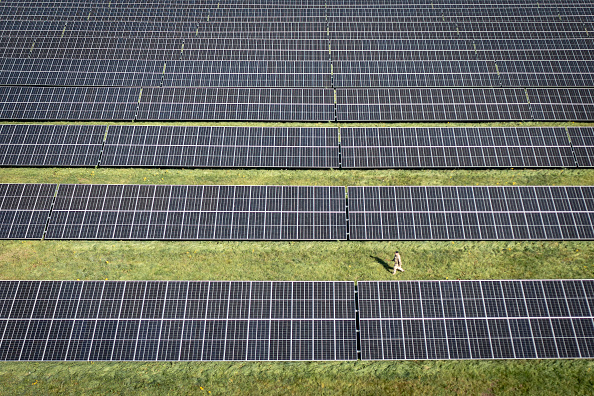If Truss wants growth, she needs to face down the rural lobby and back solar farms

It has been quite a start to Liz Truss’ premiership, and she must wonder what she has let herself in for. Even before the controversial mini-budget, she began amidst huge domestic and global uncertainty, including an energy crisis.
After Russia invaded Ukraine, the government focused on ensuring a faster transition to self-sufficiency when it comes to energy. It published the British Energy Security Strategy in April, which explained that the government will focus on supporting a massive increase in renewable energy generation, such as solar, but it also argued for fully extracting the UK’s oil and gas reserves. There was widespread criticism that expanding fossil fuel extraction would be inconsistent with the UK achieving its net zero targets. Nevertheless, the support for an exponential increase of solar farms was clear.
The Growth Plan, published alongside the mini-budget, restates the government’s position that tackling high energy prices and stimulating energy supply go hand-in-hand. The plan provided unexpected backing for major onshore wind, and nothing in that document hinted at reducing government support for large scale solar.
But only weeks before, both Rishi Sunak and Liz Truss were busy bashing solar farms in the leadership contest. “On my watch, we will not lose swathes of our best farmland to solar farms”, proclaimed Truss. The rural communities had them eating out of the palm of their hand. Now is the moment to discover whether she meant it and if she will unravel plans to build a massive 70 gigawatts of installed solar power in the UK by 2035.
Those opposed to large-scale rural solar farms argue that they take up large areas of agricultural land better used for growing food crops. This argument has become front and centre of the food security debate, given the repercussions of Russia’s invasion of Ukraine, a huge crop producer, on global markets. Fortunately, planning policy in this country already strongly protects our “best and most versatile” land, namely the higher grades of land that are best for growing crops.
Allowing farmers to diversify their landholdings to host solar developments enables them to continue as thriving farming businesses, producing crops and livestock on other parts of their farms. Most solar farms can co-exist with ongoing sheep grazing, enabling some agricultural use to continue. It’s also useful to look at the real numbers: if we installed a total of 75-90 gigawatts of solar by 2050 it would occupy a relatively small 0.4 to 0.6 per cent of British land. Yet the fear mongering continues.
Another regular complaint is that solar is a blight on our landscape. Certainly, a large new solar farm may well alter certain views, but developers are generally required to plant hedgerows and trees to screen solar panels. At the end of the lifetime of the temporary solar development, the developer is then required to reinstate the land to its former use.
The visual attractiveness of a solar or wind farm is also subjective. Personally, I feel nothing but wonderment when I see a solar farm or towering wind turbine. We need to look at the question of priorities and if we’re ready to focus on energy security. Either way, we will need heavy investment in renewables. If we can grasp the opportunity to be a world leader in solar power and all other forms of renewable energy, we will put ourselves in the best possible position to evolve into a modern, green, successful economy. I hope our new prime minister feels the same.
